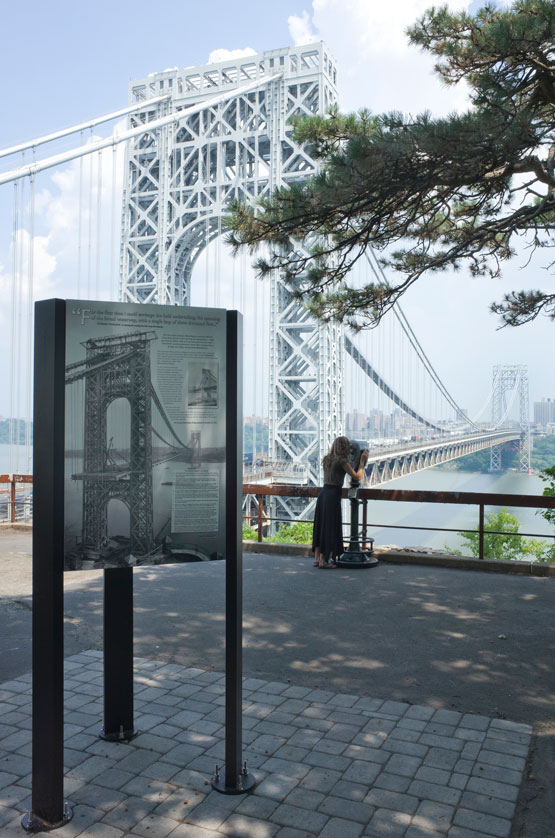An authentically reconstructed officers’ hut (with a working fireplace!) is among the features of the historic encampment area at the south end of the Fort Lee Historic Park grounds.
Photo: Sean Donato.
Visitor Center
The Visitor Center at Fort Lee Historic Park allows visitors to take a deeper dive into the Revolutionary history of the site — whether on their own or as part of a group!
Photos: Crossroads of the American Revolution National Heritage Area.
The annual “Retreat Weekend ” event at Fort Lee Historic Park helps bring to life “The times that try men’s souls” of November 1776 — while giving visitors a true taste of 18th-century life!
Photos: Anthony Taranto.
Historic Fort Lee
Fort Lee found its place in American history during the 1776 British campaign to control New York City and the Hudson River.
Having resisted the British siege of Boston, George Washington turned his attention to the defense of New York City and the Hudson River Valley. Besides constructing fortifications at New York and Long Island, Washington felt it imperative for the army to build and strengthen its defenses along the Hudson River.
The British plan, meanwhile, was to control the length of the Hudson with the overwhelming dominance of its Royal Navy. This plan, if successful, would split the Colonies in half — bringing an early end to the American rebellion.
In July 1776, the Americans began fortifying this site, which they first named “Fort Constitution.” (They later changed the name to “Fort Lee,” to honor General Charles Lee, whose army had achieved a major victory at Charleston, South Carolina, that summer.) On the high ground of northern Manhattan opposite Fort Lee, work had already begun on Fort Washington. On July 12, Admiral Richard Howe sent two British ships, the Rose and the Phoenix, up the Hudson. Cannon fire from Fort Washington alone had little effect on their passage; Washington ordered work on Fort Lee to advance as quickly as possible.
At General Rufus Putnam’s suggestion, obstructions were sunk in the river channel between the forts. With these in place, and artillery fire from the twin forts, the Americans believed that no British ships would be able to sail past without sustaining severe losses.
As the summer of 1776 went on, the largest force of British ships ever to have left English shores was amassing in New York Harbor, and by mid-August, Sir William Howe, British Commander-in-Chief (and brother to Admiral Howe), had assembled an army of over 31,000 British and Hessian troops on Staten Island.
On August 22, the British attacked Long Island and five days later forced the Americans to retreat to New York City (at the time, the city comprised only the southern tip of Manhattan Island). In September, the British took New York City and the rest of Manhattan — except for Fort Washington.
On November 16, Fort Washington fell to an overwhelming assault by Crown forces, which captured more than 3,000 American troops.
Washington realized that with the loss of Fort Washington, Fort Lee was of little military value. He ordered General Nathanael Greene, the commander at Fort Lee, to begin preparations to evacuate the fort. An orderly withdrawal, however, was not in store for the Americans…
On November 20, just four days after taking Fort Washington, General Howe ordered General Charles Cornwallis to convey 5,000 men across the Hudson several miles north of Fort Lee. When word of the advancing army reached Washington, he ordered an immediate retreat, before the Fort Lee troops could be cut off and captured by the British force. Most of the American supplies and artillery had to be left behind. These were indeed among the darkest days for the cause of American independence, leading Thomas Paine to pen his famous words,
“These are the times that try men’s souls…” Drummer boy at a Fort Lee reenactment.
Photo: Anthony Taranto.


